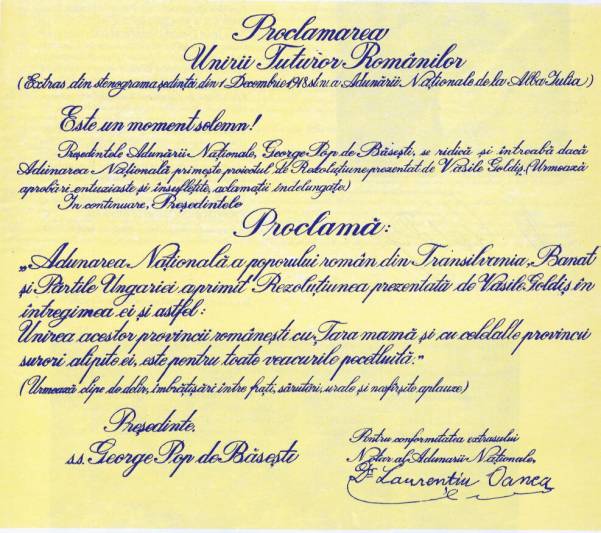The Unification of the Moldavian and Walachian Principalities
The idea of unification of the Romanian Pricipalities, thrust forward by the revolutionaries in 1848 became, after the defeat of the Revolution, the main focus of the intelectual assemblies throughout the country. Intensive propaganda to arise public awareness was conducted,either from within the countries, or by the exiled members of the former revolutionary movement; newspapers and magazines reflected the concept, which was also put down in various memoirs addressed to proeminent European figures, seeking support and understanding.

A favourable circumstance for the actual unification appeared at the end of the Crimeean War, which resulted in the defeat of Russia , thus raising an alarm regarding this country's influence which had to be limited. The Paris Treaty decided that the two Romanian Principalities which were under the influence of the Czarist Empire should be granted the right to unification, should they wish so. Ad-hoc assemblies were consequently created, in the view of settling the issue of the unification. Quite remarkable and somehow unprecedented was the fact that all the social categories were represented at these assemblies, an important step towards equality of rights.
The Unification was almost unanimously supported. However, in the 1958 Paris Convention (almost a true Constitution for the newly formed country), the major powers of Europe decided that the unification should only be partial, only regarding the justice and the army. Each Principality kept its own ruler and its own Government. A certain lack of concision regerding the election of the head of the state allowed the same person to be elected as the head of state in both countries, thus completing even without European consent the Unification that had begun and fundamenting the modern state.
Therefore, on 24 th February 1859 , the Unification of the two contries has been completed. Important measures towards administrative unification were immediately taken, followed by reforms in all areas, including free and compulsory education and the concession of arable land to the newly freed peasants.
Through a coupe, the visionary ruler that had many opponents among the aristocracy of the country, was forced to abdicate and was sent into exile. However, his actions formed a solid basis for the further development of the country towards complete independence.
|

